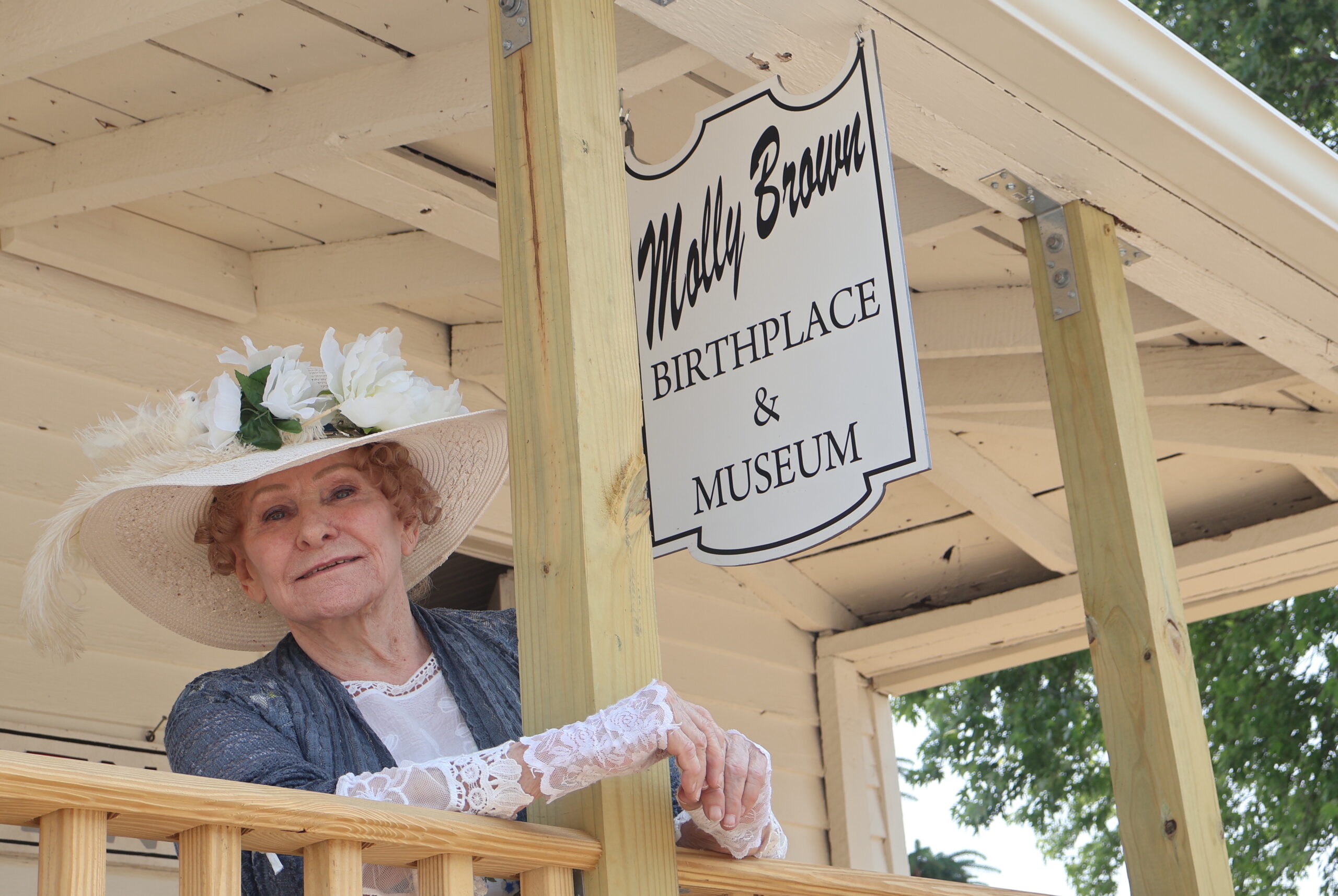An unbreakable home for an unsinkable woman: Molly Brown Birthplace and Museum reopens in new location

HANNIBAL, Mo. — Tuesday marked the reopening of the Molly Brown Birthplace and Museum in its new location at 400 North Main, proving the structure to be nearly as tenacious as the woman who brought it to relevance.
“I wanted to preserve Molly Brown’s home, and so (moving the house to its new location) felt like the best logical choice for the amount of money it was going to take to do either way,” said Trisha O’Cheltree, executive director of the Hannibal Convention and Visitors Bureau.
Its former location, several blocks away at 600 Butler, was difficult to reach year-round due to its positioning on a steep hill. Severe structural issues with the foundation necessitated thousands of dollars in repairs. Since Butler Street was off the beaten path of tourists and would’ve left it vulnerable to further water damage in the future, the idea of moving it to a more visible location became a winning one.
The Hannibal City Council approved the move nearly a year ago. In December, the house was loaded up onto a truck, hauled down to Main Street and carefully placed on its new foundation.

Now directly across the street from the Mark Twain Boyhood Home and Museum, O’Cheltree anticipates the museum will draw more visitors from riverboats and tour buses than its previous location.
“Moving it down here gives us an opportunity to … really try to get the exposure for Molly Brown that she deserves,” O’Cheltree said. “She was an incredible woman.”
Born to Irish-Catholic immigrants in Hannibal in 1867, Margaret Tobin left school after age 13 to work in a local tobacco factory. She left town for the mining community of Leadville, Colo., at age 18, and shortly after, she met and married J.J. Brown, a humble and hardworking miner. Like many families in the area, the Browns had high hopes of striking gold but were forced to fight their way through hardship after hardship instead.
Unlike the other families, though, they eventually struck gold in the early 1890s, making J.J. and Margaret Brown millionaires nearly overnight.
Their newfound wealth spurred years of philanthropy and world travels. While separated from her husband in 1912, Margaret embarked on a trip to Egypt, Rome and Paris with her daughter and J.J. and Madeleine Astor, Margaret’s newlywed friends. Upon learning her first grandson was ill back in the United States, Margaret made her way onto the maiden voyage of the R.M.S. Titanic — the boat whose sinking would claim the lives of roughly 1,500 people, including J.J. Astor, and supercharge Margaret’s legacy as a survivor for more than a century to come.

Trish Gelber will resume taking Margaret “Molly” Tobin Brown’s image three days per week for guided tours throughout the tiny-but-mighty, three-room museum now that it’s open again. She’s in her seventh year of doing so, but as a Hannibal native, her association with the character goes back to her 20s.
“I’ve had quite a life with her,” Gelber said. “(Margaret) feels like my sister … I’m so proud. I’ve had so many people say, ‘You’re so passionate about it.’ How could you not be? She’s just the most fascinating woman to me.”
Margaret ran several political campaigns, fought for miners’ and women’s rights, volunteered with impoverished women and children and for war efforts throughout World War I as a nurse, spoke five languages, authored several articles and traveled the country advocating for human rights issues and other various philanthropic causes. She became an actress in New York and Paris towards the end of her life.
By the time of her death in 1932, Margaret had given away much of her wealth and gained worldwide acclaim. Called Maggie as a child and Margaret throughout her adult life, it wasn’t until after her death that she became known as “The Unsinkable Molly Brown.”
The literal writing on the walls of her former home paints the picture of a woman who was kind in spirit, bold in nature and unapologetically full of grit, resilience and resolve. Extending far beyond her association with one of man’s most famous industrial failures, the preservation of those walls is a preservation of Margaret’s legacy itself as one of the most accomplished and progressive women of her time.
Miss Clipping Out Stories to Save for Later?
Click the Purchase Story button below to order a print of this story. We will print it for you on matte photo paper to keep forever.

